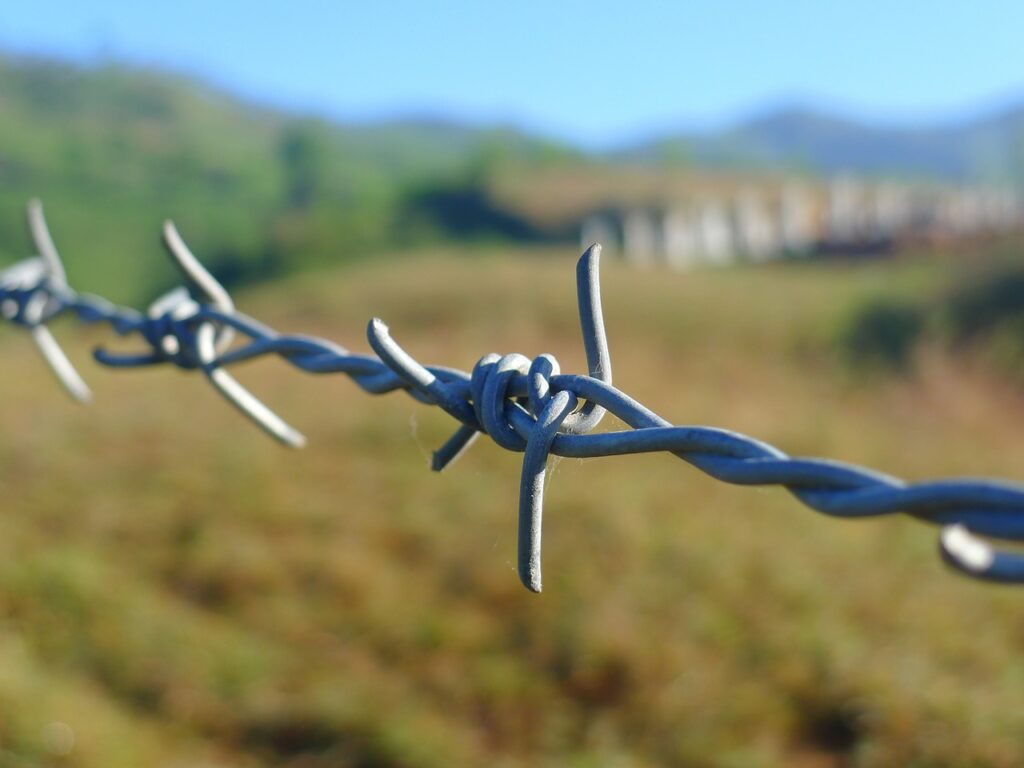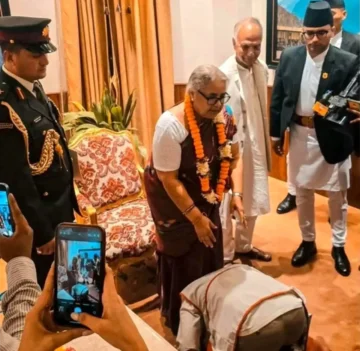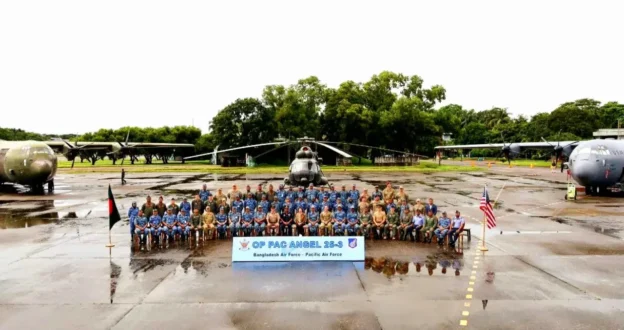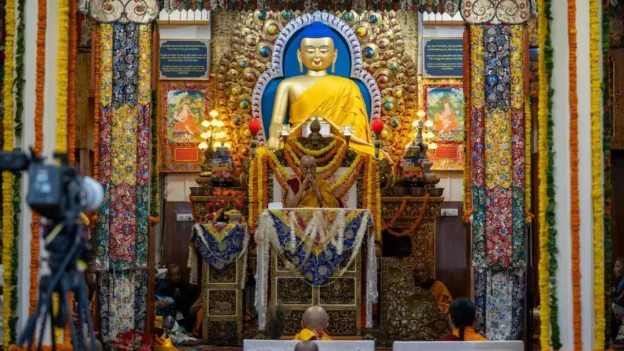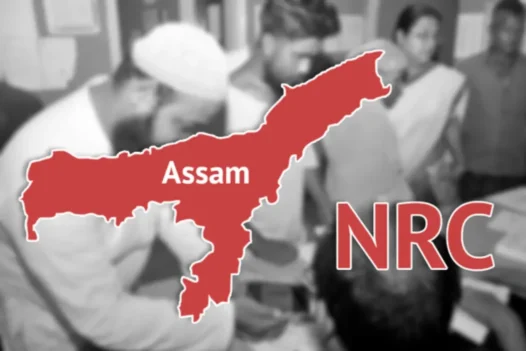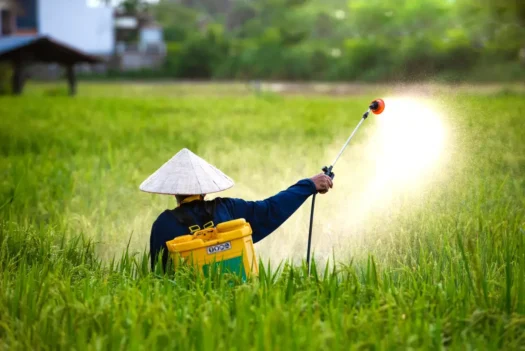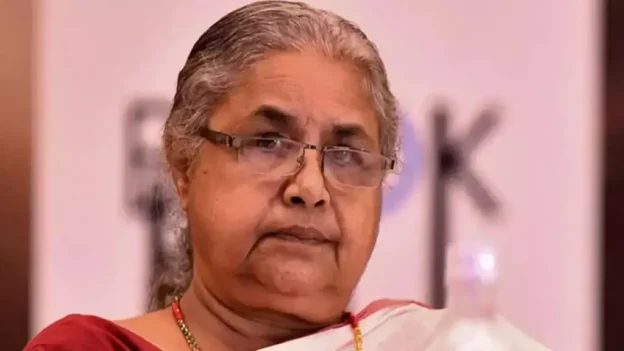Union Minister of Home Affairs, Amit Shah, announced that India would fence the border along Myanmar to curb and restrict free movement of residents on both sides and finally end the Free Movement Regime (FMR). The proposition has been projected amidst the long-standing issue of ethnic conflict in the state of Manipur, increasing insurgent activities, and issues of illegal migration in other states of the Northeast.
Speaking at the event, Shah emphasised, “Our porous border with Myanmar poses threats of insurgency and the Narendra Modi government has decided to protect the India-Myanmar border by building a 300 km stretch of fence in the entire border area (with Myanmar) like that with Bangladesh.
The statement came a day after 300 Myanmar soldiers fled their country into India’s territory due to advances by armed insurgents fighting the country’s junta, an Indian paramilitary official reported.
What is the Free Movement Regime (FMR)?
FMR is a unique arrangement between the two neighbouring countries India and Myanmar that allows the tribals situated in these border areas to enter into each other’s territories without passports and permits.
Before Independent India, the movement of tribals across the Indo-Myanmar border had been of cultural as well as economic significance. Their affinity towards similar cultural practices enhanced by common lineages enabled them to create affinal bonds, celebrate common festivals together, and also practice trade. This 1,643 km long border of commonality amplified by the Free Movement Regime thus strengthened brotherhood and assimilation between the tribal communities.
Accordingly, on September 26 1950, the Ministry of Home Affairs (MHA) published the Notification no. 4/15/50-F.I amending the Passport (Entry into India) Rules of 1950 whereby the ‘hill tribes, who is either a citizen of India or the Union of Burma and who is ordinarily a resident in any area within 40 km (25 miles) on either side of the India-Burma frontier were exempted from carrying a passport, visa and other travel documents while entering into India. The travel restrictions were made to 16 km on either side vis-a-vis the current practice of 40 km. In addition, tribals are allowed to carry items equivalent to a headload. While the Government of India provisioned citizens of Myanmar to stay for 72 hours in India, the Myanmar government allows only a 24-hour stay for Indians in Myanmar. This was further bolstered by the Act East Policy under the present BJP government in 2018.
However, no bilateral agreement between India and Myanmar on the regulation of the movement of tribals has been signed. At present, approximately 10 km of fencing in the Moreh area in Manipur State on the Indo-Myanmar border remains fenced.
History and challenges of Indo-Myanmar border (IMB)
British East India Company and King of Ava drew the first IMB on 24 February 1826 by the Treaty of Yandaboo after the first Anglo-Burmese war. It remained a colonial legacy until 1969 when the boundary agreement was signed between the Government of the Republic of India and the Union of Burma (now Myanmar). The IMB runs through four northeastern states Arunachal Pradesh (520 km), Nagaland (215 km), Manipur (398 km), and Mizoram (510 km). Gradually, both countries began to erect Border Posts along the border where at present a total of 186 Border Posts stand.
Unclear Border Posts – The challenging terrain of the porous border makes it difficult to complete fencing in the region. Some of the border posts have also been dislocated from their original position.
Misuse of Free Movement Regime (FMR) – Issues along the IMB vary from state to state. On the southern side of the IMB, a lack of infrastructure and poor connectivity has led to the isolation of the region from the mainstream development of both countries. It largely remains the most ‘underdeveloped region’ on the IMB.
The IMB in Manipur is strewn with smuggling and illegal trade and activities. The area is ‘sparsely populated’ and remains underdeveloped as well. These activities restrict any developmental activities by the government in the area.
Finally, the IMB in Arunachal Pradesh which situates the China-India-Myanmar trijunction smuggles weapons and arms originating in China into India via Lohit. Lack of infrastructure, roads, and unregulated movements on the IMB has led to further deterioration of the border areas.
Insurgency at IMB – Insurgent groups operating in India’s Northeast such as the United National Liberation Front (UNLF), People’s Liberation Army (PLA), and National Socialist Council of Nagaland (NSCN) take shelters, erect camps, obtain arms, train cadres and engage in smuggling and illegal activities to raise funds. Their association with the ethnic armies of Myanmar allows frequent misuse of the Free Movement Regime.
Impact on Border Trade – Border trade along the IMB is still informal. Although Land Customs Stations (LCS) have been established on the Indian side of the border for trading purposes, these stations are largely unregulated thereby leading to greater smuggling of weapons and arms. China-made goods of low quality also flow into large quantities and remain unchecked most of the time. Myanmar’s exports to India largely outweigh India’s exports to Myanmar.
What triggered the reconsideration of FMR?
On May 3, 2023 Manipur broke out into an ethnic conflict between the majority Meitei and tribal Kuki-Zo communities and is still ongoing. Over the past decade, the Manipur government has expressed concerns over the “influx” of illegal migrants from Myanmar nationals into Manipur causing tensions in the state. The Manipur government also suggested a state-wide “National Registry of Citizens” on similar lines as that of the Assam-NCR. Subsequently, the idea garnered attention as Myanmar nationals entered Indian soil taking refuge and escaping the civil war back in their country.
Eventually, in September 2023, Manipur Chief Minister Nongthombam Biren Singh accused the illegal migrants from Myanmar of ethnic violence and misusing the Free Movement Regime. The Chief Minister urged the Centre to end the FMR, suspended on 1 April 2020, during the COVID-19 lockdown. It was further extended after the military coup in Myanmar in February 2021.
This statement by the Manipur Chief Minister has angered the Kuki-Zo community and they have accused the Chief Minister of stigmatizing their community as “illegal migrants” and “narco-terrorists” to justify their “ethnic cleansing”. However, the Meiti-dominated regions of Manipur extend support to the fencing along the Myanmar border as well as the National Register of Citizens (NRC).
Other border states on FMR
Mizoram has expressed dismay over the Centre’s decision to fence the border with Myanmar. Mizoram Chief Minister Lalduhoma informed External Affairs Minister S Jaishankar at a meeting that any move to fence the Indo-Myanmar border is “unacceptable” for the Mizos. In another meeting with Prime Minister Narendra Modi, Lalduhoma expressed that, “The Indo-Myanmar boundary on the Mizoram side was demarcated by the British without the consent of the affected people.” The Chief Minister said that it will continue providing refuge to the people of Myanmar as they share ancestral and cultural ties with the people of Myanmar, an official statement stated.
Nagaland Deputy Chief Minister Y Patton said Nagaland will discuss the Centre’s decision to fence the border with Myanmar with other Northeast states. Besides the state’s inputs on the FRM, the state will also strive to better regulate the Indo-Myanmar border, taking into account both national security and the emotions of the people living in the border areas.
On January 28, a tribal organisation in Manipur’s Churachandpur district declared its opposition to the Centre’s decision to fence the Indo-Myanmar border. The Indigenous Tribal Leaders Forum (ITLF) conveyed this stance during a public consultation in the district headquarters town on Saturday.
Living in borders
The current Indo-Myanmar Border is a colonial legacy, a remnant of the past that separated communities of the same ethnic group, and created two different nationalities, and two nations without ensuing cognizance to the people affected.
In Manipur where the IMB runs through Moreh, the border divides people of the same community and their houses. In the Mon district of Nagaland, IMB passes through the village chief’s house splitting it into two halves. One of the many reasons that question the practicality of a fenced border.
The villagers on both sides of the border enjoy dual citizenship and are entitled to move freely across the border. FMR has also enabled the locals from Myanmar’s villages to travel to India for better education opportunities, trade, and medical facilities. People on the border share common festivals together, establish affinal relations, and own properties on either side of the border. These relations are therefore emotional, systemic, and effective. Thus, fencing of borders does not provide justice to the people affected. And if at all, fenced borders foster the creation of better and more complex networks of organized crimes.
Considering the impacts it will have on the people residing on the border, dismissals of other border states on the fencing of the Indo-Myanmar border, and the effect of reconsidering FRM on India’s relation with Myanmar, the Centre will have to be cautious of not moving hastily. Fenced borders/border walls, Wendy Brown remarks are a sign of waning sovereignty. That, the states display more symbols of force such as border walls the more state sovereignty wanes. Although these serve as a self-defense mechanism, it is built around fragile egos built around national and religious identity. Borders reaffirm the state’s territorial authority. Permeability of borders in actuality also raises other issues of concern such as border control, state security, and immigrant access to social, economic, and political rights.
Thus, one could be of the opinion that the point in question is whether fenced borders are the solution. Better strategies that incorporate the aspirations of the people of the Northeast ought to be adopted. Improved regulatory mechanisms on the border haats, creation of haats at main entry points to reduce the number of head load traders, effective and requisite vigilance of border security guards, improved infrastructure, connectivity, and development can all ensure revising FMR from an amicable perspective towards our neighbor.
For more, read: Dr. Anuradha Oinam (2022), Revisiting Free Movement Regime (FMR): Challenges and Implications.

